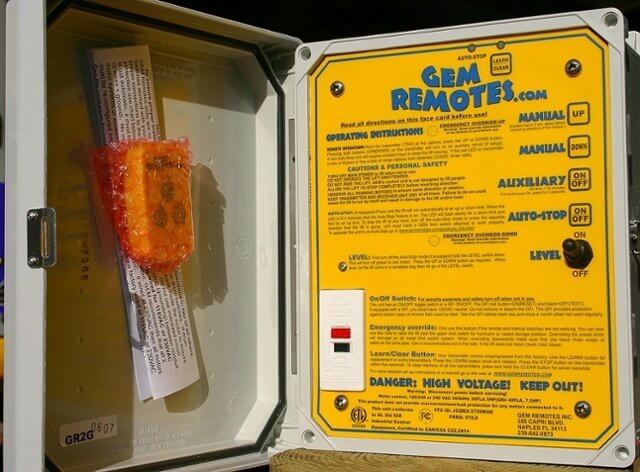Is your car’s heater not working? Feeling the chill on cold mornings?
You might be dealing with a “No Car Heat Diagnosis” situation. This can be frustrating and uncomfortable, especially during winter. Understanding why your car heater isn’t working is crucial. Several issues could be the culprit, from low coolant levels to a malfunctioning thermostat.
Knowing these common problems can help you diagnose and fix the issue faster. In this guide, we’ll explore the possible reasons behind no heat in your car and provide tips for diagnosing the problem. Whether you’re a seasoned driver or new to car maintenance, this information will help you stay warm and safe on the road.
Common Causes Of No Car Heat
Driving in cold weather without heat can be uncomfortable. Understanding the common causes of no car heat can help you diagnose the issue. Below are some common reasons why your car might not be producing heat.
Thermostat Issues
The thermostat regulates the engine’s temperature. If it fails, it can cause the heating system to malfunction. A stuck thermostat can prevent the coolant from flowing through the engine. This results in no heat being generated. A thermostat that is stuck open or closed can cause significant issues. Replacing a faulty thermostat can often solve the problem.
Low Coolant Levels
Coolant is essential for transferring heat from the engine to the heater core. Low coolant levels can lead to insufficient heat. Check the coolant levels in your car’s reservoir. Refill it if necessary. Low levels might indicate a leak in the system. Regularly check for leaks to prevent future issues. An optimal coolant level ensures proper heat circulation.
| Common Cause | Effect |
|---|---|
| Thermostat Issues | No heat generation |
| Low Coolant Levels | Insufficient heat |
Signs Of A Faulty Thermostat
A faulty thermostat can cause various problems in your car. The thermostat controls the flow of coolant to the engine. When it fails, you will notice several signs. Recognizing these signs early can save you from costly repairs.
Engine Overheating
One of the most obvious signs is engine overheating. The thermostat may be stuck closed. This prevents coolant from reaching the engine. Without coolant, the engine temperature rises quickly.
If your car’s temperature gauge moves into the red zone, this is a clear sign. Overheating can damage the engine. You should address this issue promptly.
| Cause | Effect |
|---|---|
| Stuck Thermostat | Engine Overheating |
| Blocked Coolant Flow | High Engine Temperature |
Fluctuating Temperature Gauge
A faulty thermostat can also cause a fluctuating temperature gauge. This means the gauge moves up and down unpredictably. This happens when the thermostat opens and closes irregularly.
Your car may alternate between being too hot and too cold. This makes it hard to regulate the engine temperature. A stable temperature is crucial for engine performance.
- Unpredictable gauge readings
- Erratic engine cooling
- Poor engine performance
Checking Coolant Levels
If your car heater isn’t working, the first step is to check the coolant levels. The coolant helps regulate the engine’s temperature and is essential for heating your car. Low coolant can lead to a malfunctioning heater. Here’s how you can check and refill your coolant levels safely.
Locating The Coolant Reservoir
The coolant reservoir is usually a clear or translucent plastic container. It is located near the engine, often on the passenger side. Look for a container with a cap labeled “coolant” or “engine coolant.” If you’re unsure, refer to your car’s manual.
Refilling Coolant Safely
Before refilling, ensure the engine is off and cool. Never open the coolant cap when the engine is hot. The hot coolant can cause serious burns.
Follow these steps to refill the coolant:
- Open the hood and locate the coolant reservoir.
- Remove the cap slowly to release any pressure.
- Check the current coolant level. It should be between the “min” and “max” marks.
- If low, add the recommended coolant for your car. Pour slowly to avoid spills.
- Replace the cap securely.
Use a 50/50 mix of coolant and distilled water unless otherwise specified. This ensures optimal performance and prevents freezing or boiling.

Credit: m.facebook.com
Heater Core Problems
The heater core is a small radiator that helps heat your car. If the heater core has problems, your car’s heater may not work. This can make driving uncomfortable in cold weather. Understanding the signs of a clogged heater core is important.
Symptoms Of A Clogged Heater Core
If the heater core is clogged, you may notice a few symptoms. The heater may blow cold air. The car’s windows may fog up. You might smell a sweet odor inside the car. This could mean coolant is leaking. Also, the engine may overheat. Recognizing these symptoms early can prevent bigger problems.
Cleaning Or Replacing The Heater Core
Cleaning the heater core can help if it’s clogged. First, disconnect the heater hoses. Use a garden hose to flush out debris. This might fix the problem. If cleaning does not work, you may need to replace the heater core. This job can be complex. It might require removing the dashboard. Consider hiring a professional mechanic for this task.
Inspecting The Blower Fan
Experiencing no heat in your car can be frustrating. One of the key components to check is the blower fan. The blower fan is essential for pushing hot air from the heater core into the car’s cabin. If the blower fan is not working properly, you won’t get any warm air, no matter how hot the heater core is. Let’s delve into inspecting the blower fan by focusing on common issues such as the fan not blowing air and noisy blower fans.
Fan Not Blowing Air
If the fan is not blowing air, the first step is to ensure the fan is getting power. This can be done by checking the fuse associated with the blower fan. A blown fuse will disrupt the electrical supply, preventing the fan from working.
- Check the fuse: Locate the fuse box and find the fuse corresponding to the blower fan. If the fuse is blown, replace it with a new one.
- Inspect the fan motor: If the fuse is intact, the issue may lie with the blower motor itself. Use a voltmeter to check if the motor is receiving power. If the motor is getting power but not working, it may need to be replaced.
- Examine the control switch: Sometimes, the issue can be with the blower fan control switch. Ensure the switch is functioning correctly by testing it at different settings.
Noisy Blower Fan
A noisy blower fan is another common issue. If the fan makes unusual sounds, it could indicate a problem.
| Noise Type | Possible Causes |
|---|---|
| Squeaking or Squealing | Worn-out bearings or debris in the fan |
| Rattling | Loose components or foreign objects in the fan |
| Grinding | Motor issues or damaged fan blades |
Addressing these noises involves different steps:
- Clean the fan: Remove any debris or foreign objects that may have gotten into the fan.
- Lubricate the bearings: If the bearings are worn out, lubricating them may reduce noise.
- Tighten loose components: Ensure all parts are securely fastened to prevent rattling.
- Replace damaged parts: If the fan blades or motor are damaged, consider replacing them.
Regular maintenance of the blower fan can prevent these issues. Keep the fan area clean and check the components periodically.

Credit: www.youtube.com
Heater Control Valve Malfunction
Experiencing no heat in your car on a cold day can be frustrating. One common culprit is a heater control valve malfunction. The heater control valve regulates the flow of coolant to the heater core. A malfunction can lead to no hot air blowing inside the car.
Identifying Valve Issues
To identify issues with the heater control valve, start by checking for visible leaks. Coolant leaks around the valve indicate a problem. Inspect the valve and surrounding hoses for any cracks or damage. Another sign is if the valve does not move when the heater controls are adjusted.
Use a multimeter to check the electrical connections. A faulty electrical connection can cause the valve to malfunction. Ensure there is power reaching the valve. If there is no power, the issue may be electrical rather than mechanical.
Repairing Or Replacing The Valve
If the heater control valve is damaged, it may need repair or replacement. First, drain the coolant from the system to prevent spills. Then, remove the old valve by disconnecting the hoses and electrical connections. Install the new valve by following the reverse steps.
After installation, refill the coolant system. Ensure there are no air pockets by bleeding the system. Finally, test the new valve by running the heater. Check for any leaks and ensure the heater blows hot air.
In some cases, cleaning the valve may resolve minor issues. Use a suitable cleaner to remove any debris or buildup. This can help restore proper function without replacing the valve.
| Signs of Heater Control Valve Malfunction | Steps to Diagnose |
|---|---|
| No hot air from heater | Check for leaks, inspect valve |
| Coolant leaks | Inspect for cracks, damage |
| Valve not moving | Check electrical connections |
Electrical System Failures
Experiencing no heat in your car can be frustrating. Electrical system failures often cause this issue. These failures can result from various components within the car’s electrical system. Understanding these components can help in diagnosing and fixing the problem. Here, we will discuss some common electrical failures that could be the cause.
Blown Fuses
Blown fuses are a common issue. Fuses protect your car’s electrical circuits. They break the circuit when there is an overload. This prevents further damage. If a fuse blows, your car’s heater may stop working. To fix this, locate the fuse box. Check the heater fuse. Replace it if it is blown. This is a simple and inexpensive fix. Always keep spare fuses in your car.
Faulty Wiring Connections
Faulty wiring connections can also cause no heat. Wires carry electricity to the heater. If they are loose or damaged, the heater won’t work. Inspect the wiring connections. Look for any signs of wear or damage. Tighten any loose connections. Replace any damaged wires. This can restore the heater’s function. Regular checks can prevent wiring issues.

Credit: www.facebook.com
When To Seek Professional Help
Car heating issues can be frustrating, especially during cold weather. While some problems are easy to fix, others need a professional touch. Knowing when to seek professional help is essential for your safety and comfort.
Persistent Heating Issues
If your car has persistent heating issues, it is time to call a professional. Common signs include:
- Heat not working consistently
- Strange noises when you turn on the heater
- Fluctuating temperatures
These problems often indicate deeper issues. A professional can diagnose the root cause and fix it properly.
Complex Repairs
Some complex repairs need expert skills and tools. Examples include:
| Issue | Why Seek Professional Help |
|---|---|
| Heater Core Replacement | This is a complex part. It requires disassembling the dashboard. |
| Thermostat Issues | Incorrect installation can lead to engine damage. |
| Coolant Leaks | Leaks can be hard to locate and fix. |
Attempting these repairs without expertise can make the problem worse. Professionals have the knowledge and tools to handle them safely.
Frequently Asked Questions
Why Is My Car Heater Not Working?
A faulty thermostat or low coolant levels can cause your car heater to stop working.
How Do I Know If My Car Thermostat Is Bad?
If your engine overheats or takes too long to warm up, the thermostat may be bad.
Can A Bad Heater Core Cause No Heat?
Yes, a clogged or leaking heater core can prevent heat from reaching your car’s interior.
What Does A Blown Fuse Mean For My Car Heater?
A blown fuse can stop power from reaching the heater, causing it to stop working.
How Can I Fix My Car Heater Problem?
Check the thermostat, coolant levels, heater core, and fuses. If needed, consult a mechanic.
Conclusion
Solving car heat issues can be straightforward. Check common causes like coolant levels. Inspect the thermostat and heater core for problems. Regular maintenance prevents future heating troubles. Seek professional help if unsure. Stay warm and ensure your car’s heating system works.
Proper diagnosis saves time and money. Keep your vehicle in top condition and enjoy comfortable drives.
















